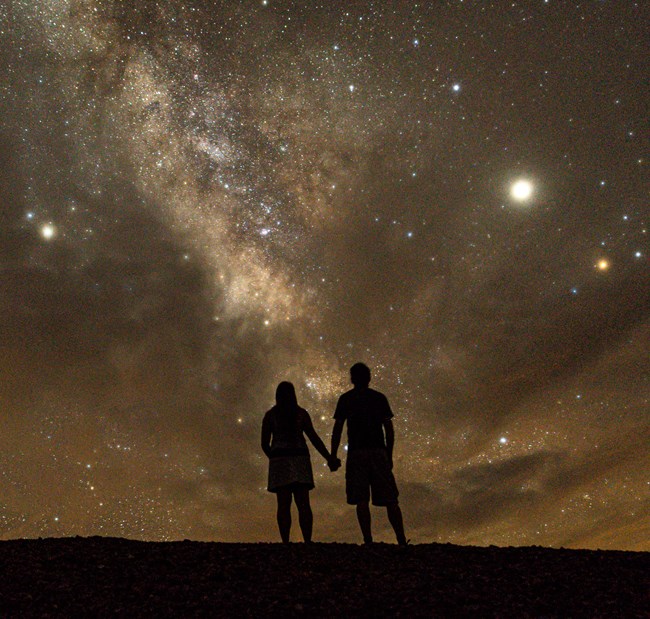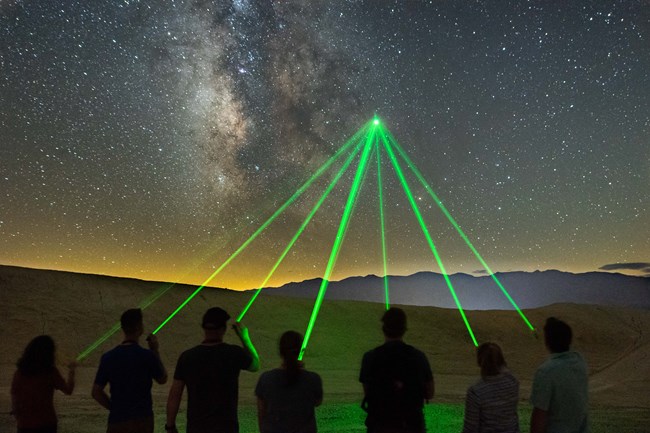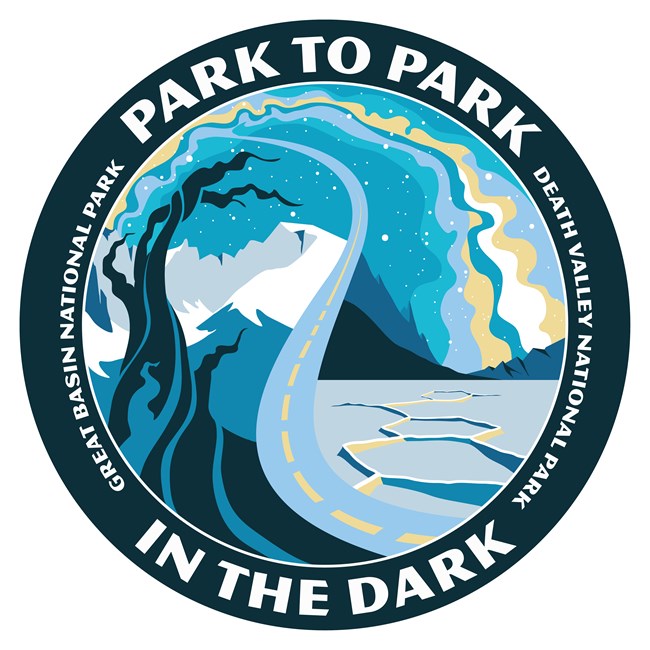
© Patrick Taylor Did you know that Death Valley National Park has no closing time and that it is just as spectacular at night as it is during the day? Consider these ideas for ways to experience the park at night:Star GazingFar from cities and carefully managed to protect darkness, Death Valley National Park is an excellent place to view the night sky. Nights in Death Valley are so dark that the park is classified at the highest (Gold Tier) level by the International Dark-Sky Association; many celestial objects which can be viewed from Death Valley are not visible elsewhere in the world! While most places in the park away from lodging/campgrounds and major roads will provide good night-sky viewing opportunities, the top ranger suggestions for star gazing locations are: Mesquite Flat Sand Dunes, Harmony Borax Works, Badwater Basin and Ubehebe Crater. 
© Patrick Taylor Hints for seeing the most stars:
Use NASA's Spot the Station app to receive notifications when the International Space Station is visible. 
© Patrick Taylor Ranger ProgramsInterested in learning more about the night sky? Join a Ranger for an introduction to the cosmos at a famous Death Valley location. Programs are offered during the winter; check at a visitor center or on our park calendar for the schedule. Night PhotographyDark nights mean ample opportunity to photograph the stars. While there is no one “best” location, astrophotographers often choose places such as Zabriskie Point, Mesquite Flat Sand Dunes or Harmony Borax Works to capture their night images. Please note that while you may park along major roadways while photographing, camping along paved roads is prohibited.

© Patrick Taylor Full Moon Night HikingWhile we don’t recommend a hike at night in an area with obstacles such as rocks, a casual stroll at a place like Mesquite Flat Sand Dunes or Badwater Basin can be quite rewarding. Visit during a full moon (see NASA's Moon Phases webpage) for the best natural lighting. Make sure to pause to view the stars and to listen for wildlife. Always bring a flashlight and water and remember that nighttime temperatures can still be over 100 F (38 C) during the summer. Dark Sky FestivalDeath Valley National Park holds an annual event each spring, where visitors are invited to come and learn about space. The event lasts multiple days and includes special ranger programs, guest speakers from organizations such as NASA, and hands-on activities. Check the park calendar or ask a ranger at the Furnace Creek Visitor Center for upcoming event dates. 
Logo: Tyler Nordgren Park to Park in the DarkInterested in extending your trip to discover more dark places? Check out Nevada’s first Astro-tourism route, Park to Park in the Dark, which connects two International Dark Sky Parks: Death Valley National Park and Great Basin National Park. Motorists along this route will be able to ponder life’s biggest questions as they travel through some of the darkest areas in the country and gaze up into star-studded skies. |
Last updated: March 11, 2025
